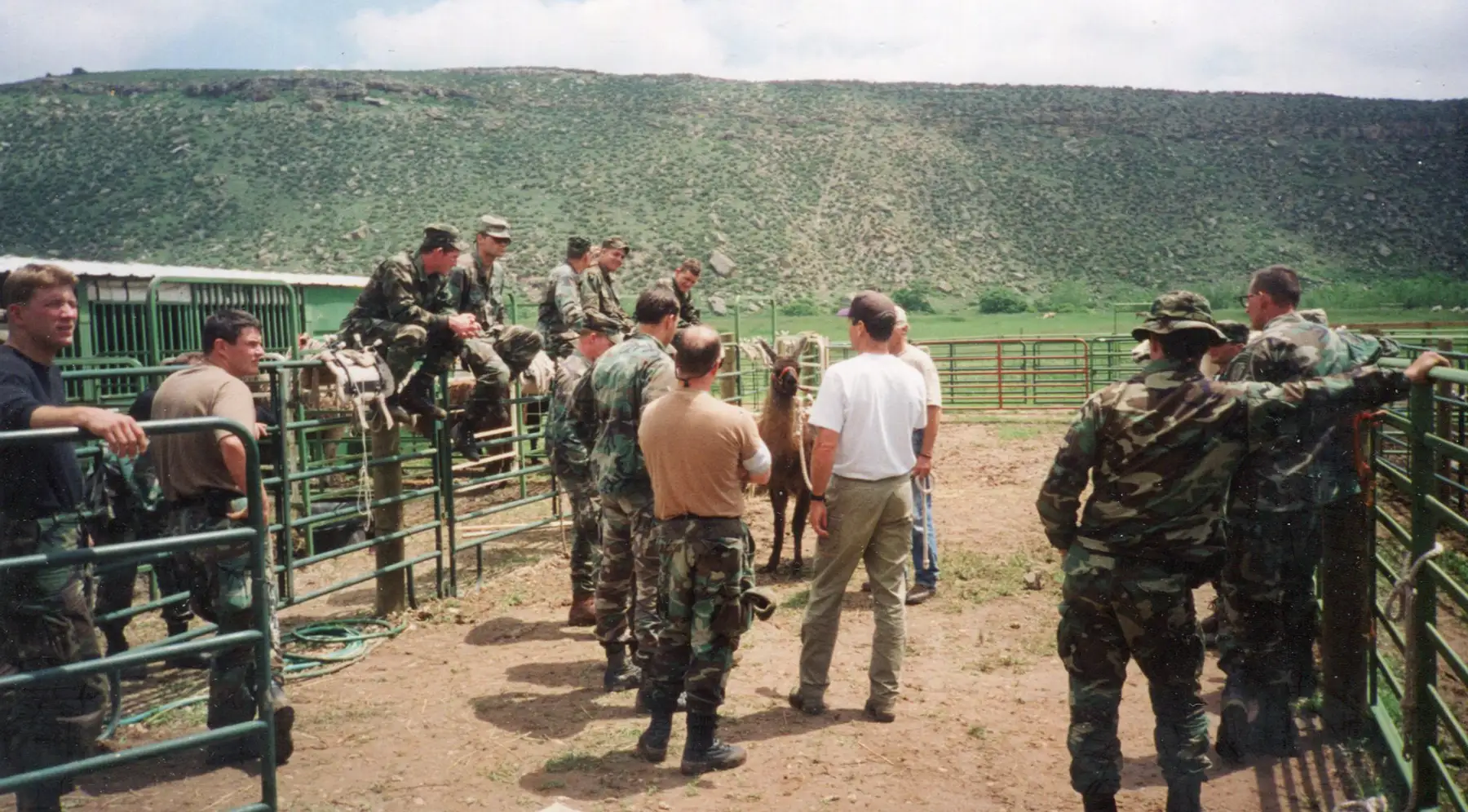The llama is highly-adapted to thrive in their natural environment. They reside on the high, arid altiplano region of the South American Andes, noted for wide daily temperature swings, intense sun, and low humidity, that requires versatile, durable protection. Llama fiber has many positive attributes, but its unique and remarkable comfort range is unparalleled compared to other fibers, natural or synthetic.
Llama fiber is hollow and mostly dry with an oil content of less than 1%. It has a high tensile strength, low scale, and it is highly resistant to the deteriorating effects of UV light. This makes it soft, light weight, strong and durable, non-pilling, low static, antimicrobial, “warm when wet”, and flame retardant with a very impressive comfort range.
It’s intriguing that one property of llama fiber, coupled with its physical structure, is primarily responsible for all these advantages. That property is its ability to hold and release water vapor and is measured by a property known as moisture regain. (Moisture regain is also referred to as “wicking”.)
One gram of water vapor holds 540 calories of heat energy known as the “latent heat of vaporization”. As denoted by the term “latent heat of vaporization” this heat is not discernible but is at work keeping the water in its vaporized, gaseous state. This water vapor serves as a reservoir for releasing heat to the llama’s body as temperatures decrease and absorbing and dissipating excess heat produced by the llama as air temperatures increase.
Llama fiber has a unique ability to hold water vapor at a constant level of 27%, its moisture regain value. Moisture regain is measured by desiccating a fiber sample so it is completely dry, weighing the sample in this desiccated state, and then exposing it to air and weighing it again. The sample will attract water vapor from the air that will be evident by weighing the sample post exposure. The increased weight of the sample, converted to a percentage of the dry weight, is characterized as “moisture regain”. Llama fiber has a moisture regain of 27% meaning that if you expose a desiccated 100 gram sample of llama fiber to the air, it will weigh 127 gms. Moisture regain values for some common fibers are synthetics (2-5%), cotton (6-8%), and sheep wool (18-20%). The higher a fiber’s moisture regain, the greater its comfort range.
Moisture regain remains constant at 27%. If air temperatures are cold, the llamas body heat will be used to maintain the 27% moisture level even if the surrounding temperature is significantly less. Conversely, if the air temperature is high and water vapor is produced by the llama perspiring to cool itself, the fiber will give off the excess water vapor and maintain its moisture regain level of 27%. Giving off the excess water vapor eliminates the heat of vaporization that the excess vapor contains and maintains the llamas‘s normal body temperature.
We formed a clothing company, www.altiplanoinsulation.com to produce superior outerwear utilizing the unique properties of llama fiber. We developed this video to demonstrate the point.
Temperature regulation is an important aspect of managing llamas. Here in CO where our climate and geography are similar to the SA altiplano, we are able to rely on the fiber’s function to manage the extremes of temperature and moisture both in summer and winter. We do not shear our llamas since our humidity is low during the warm summer months and we have significant nighttime cooling so the fiber’s natural regulation is adequate. In the winter, we can often have periods of several days of temperatures below 0 degrees F. In cold extremes we find a full fiber coat is necessary to hold the heat needed for the animal’s protection.
As llamas’ range moves eastward from the Rockies, temperatures and humidity increase significantly and shearing becomes necessary. The ability of llamas to dissipate heat is significantly less in the saturated humid air common in the Midwest, the Southeast, and coastal areas. A full fiber coat produces additive insulation and heat when excess water vapor from perspiration cannot be given off into saturated humid air. Heat stress is inevitable in this environment and shearing is a necessity.
We see occasional cases of heat stress here when exercising unconditioned or immature llamas or llamas carrying excess body weight. Our best strategy is to manage animal conditioning and body weights rather than fiber. During the 6 months of our typical pack season, our llamas may encounter spot temperatures of 90+ degrees in some summer situations and negative 20-30 degrees on hunts in the late fall and early winter. A full coat of fiber handles both extremes.
It is important to note that keeping track of variables for individual llamas as well as the specific environmental conditions where they pack is important:
-Considerations for the individual llama include age, experience, and current conditioning.
-Environmental considerations are considerable including: trail sun exposure, seasonal temperatures, condition of trail tread, packing distance, pace, basal elevation, altitude gain and loss, and current weather conditions.
With experience, one gains a sense of how all these factors combine to affect the outcome of a pack trip. Analyzing these in advance and preparing is the most effective strategy.
Failure to address any of these various factors will typically present as exhaustion and progress to heat stress. Heat stress can be short lived if properly addressed or debilitate an animal if left unaddressed. Packers will often default to shearing in hopes of limiting heat stress, even though the heating issue is due to other factors.
This strategy can be limiting for a llama’s ability to realize its peak performance level in all conditions. The llama’s fiber is an effective cushion for the pack on the animal’s back and affects comfort and pack stability. Llama fiber also serves important functions in protecting their skin from UV light and sunburn as well as protection from moisture, and energy conservation. It’s important to allow the llama full use of its many assets for peak performance and comfort. The llamas’ fiber is one of its primary physical assets and deserves careful consideration and management.

